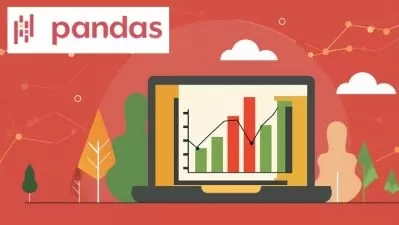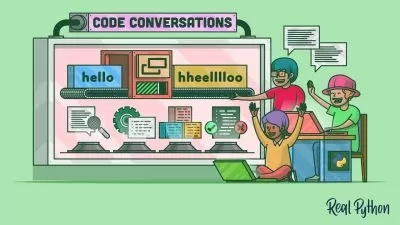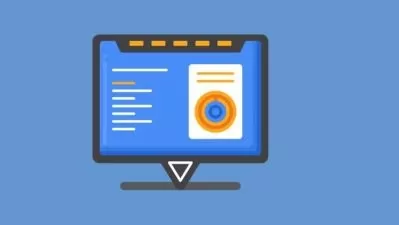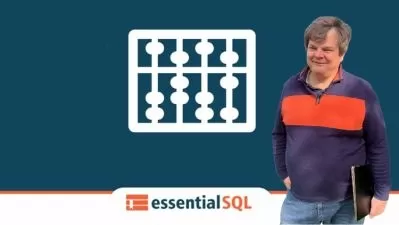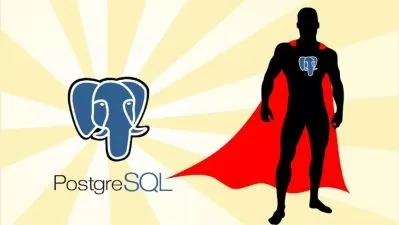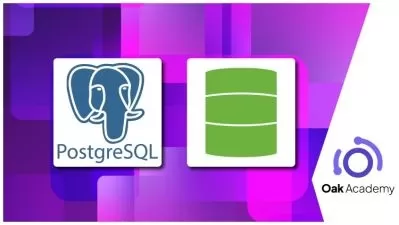The Complete Python/PostgreSQL Course 2.0
Jose Salvatierra,Teclado by Jose Salvatierra,Codestars • over 2 million students worldwide!
13:31:23
Description
Take the next step in your Python development by leveraging the power of PostgreSQL and databases!
What You'll Learn?
- How to leverage the power of databases (in-memory, SQLite, and PostgreSQL) to upgrade your Python applications
- Prevent common pitfalls: avoid SQL injection attacks, store database credentials securely, and optimize the performance of your applications
- Understand how databases work and how to take advantage of their features from the ground up, by building multiple projects
- This is a no-nonsense, no-frills course on fully mastering PostgreSQL and how to use it effective within and outside of your Python apps
- Learn how to work with dates and times effectively in Python applications
- Produce engaging charts, graphs, and reports using database data
Who is this for?
More details
DescriptionMaster PostgreSQL and use it in your Python apps!
Python and PostgreSQL are two of the most in-demand skills in the world. After completing this course, you'll be confident in adding both to your resume/CV.
Everything you'll learn in this course is relevant to other database systems too, like MySQL, Microsoft SQL Server, or Oracle.
With this course, you'll master PostgreSQL and how to work with it from Python. If you use Python and you want to augment your skills with a database, you'll love this course!
You will:
Work with different types of databases (in-memory, SQLite, and PostgreSQL), and understand when to use each in your Python apps.
Build a programming journal project to add a SQLite database to your Python application.
Improve a database design incrementally so you're not bound by your initial design.
Model different relationships with PostgreSQL, including one-to-many and many-to-many.
Reduce errors by applying database changes using database migrations with Python and alembic.
Build a polling app to learn about advanced data analysis with GROUP BY, PostgreSQL window functions, and nested queries.
Work with dates and times in PostgreSQL, and avoid common timezone pitfalls.
Structure Python apps like a professional, to make development much easier.
Produce data analysis reports and charts using matplotlib with PostgreSQL data.
You'll also tackle advanced PostgreSQL topics, such as:
User-Defined Functions
Stored Procedures
Locking
Async database connections
As you can see, you're going to learn a lot!
But this is a no-nonsense, no-frills course. We have planned, crafted, and edited every lecture to be concise and compact. No time wasted, so you can master PostgreSQL in record time.
We've created dozens of diagrams to explain database concepts, as well as code-along videos. But you won't just be watching me code! You'll develop the projects yourself first, to gain hands-on experience and master PostgreSQL.
Also, throughout the course, I provide data sets with challenges and exercises for you to practice what you've learned.
I've been teaching and helping students online for over 8 years, and this course is the culmination of my teaching experience. I know how to help you understand concepts fully and quickly, in the best way for you.
When you complete this course you'll be able to:
Extend your Python applications with database functionality using PostgreSQL.
Answer complex questions using data and generate reports.
List PostgreSQL as one of your strongest skills.
Check out the free preview videos for more information and to try out the course!
I'll see you on the inside!
Who this course is for:
- Beginner Python developers who want to take the next step in upgrading their applications by leveraging the power of databases.
- Any Python developer who is not familiar with databases and wants to fully understand their choices before using one in their applications
- Business analysis and data scientists who want to create larger applications or interact with larger data sets through a database
Master PostgreSQL and use it in your Python apps!
Python and PostgreSQL are two of the most in-demand skills in the world. After completing this course, you'll be confident in adding both to your resume/CV.
Everything you'll learn in this course is relevant to other database systems too, like MySQL, Microsoft SQL Server, or Oracle.
With this course, you'll master PostgreSQL and how to work with it from Python. If you use Python and you want to augment your skills with a database, you'll love this course!
You will:
Work with different types of databases (in-memory, SQLite, and PostgreSQL), and understand when to use each in your Python apps.
Build a programming journal project to add a SQLite database to your Python application.
Improve a database design incrementally so you're not bound by your initial design.
Model different relationships with PostgreSQL, including one-to-many and many-to-many.
Reduce errors by applying database changes using database migrations with Python and alembic.
Build a polling app to learn about advanced data analysis with GROUP BY, PostgreSQL window functions, and nested queries.
Work with dates and times in PostgreSQL, and avoid common timezone pitfalls.
Structure Python apps like a professional, to make development much easier.
Produce data analysis reports and charts using matplotlib with PostgreSQL data.
You'll also tackle advanced PostgreSQL topics, such as:
User-Defined Functions
Stored Procedures
Locking
Async database connections
As you can see, you're going to learn a lot!
But this is a no-nonsense, no-frills course. We have planned, crafted, and edited every lecture to be concise and compact. No time wasted, so you can master PostgreSQL in record time.
We've created dozens of diagrams to explain database concepts, as well as code-along videos. But you won't just be watching me code! You'll develop the projects yourself first, to gain hands-on experience and master PostgreSQL.
Also, throughout the course, I provide data sets with challenges and exercises for you to practice what you've learned.
I've been teaching and helping students online for over 8 years, and this course is the culmination of my teaching experience. I know how to help you understand concepts fully and quickly, in the best way for you.
When you complete this course you'll be able to:
Extend your Python applications with database functionality using PostgreSQL.
Answer complex questions using data and generate reports.
List PostgreSQL as one of your strongest skills.
Check out the free preview videos for more information and to try out the course!
I'll see you on the inside!
Who this course is for:
- Beginner Python developers who want to take the next step in upgrading their applications by leveraging the power of databases.
- Any Python developer who is not familiar with databases and wants to fully understand their choices before using one in their applications
- Business analysis and data scientists who want to create larger applications or interact with larger data sets through a database
User Reviews
Rating
Jose Salvatierra
Instructor's CoursesTeclado by Jose Salvatierra
Instructor's CoursesCodestars • over 2 million students worldwide!
Instructor's Courses
Udemy
View courses Udemy- language english
- Training sessions 137
- duration 13:31:23
- Release Date 2022/12/24








